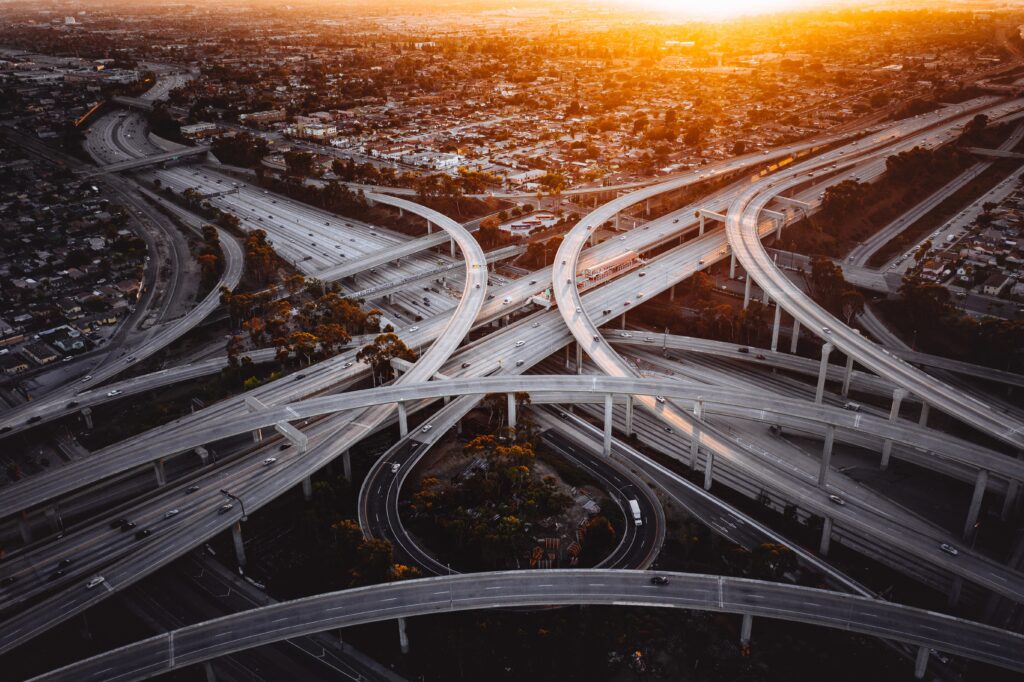People ask me occasionally if I would ever move back to the U.S. I pause to ponder. I do miss my family, the humor, and particularly the buckwheat pancakes at IHOP which I still haven’t managed to replicate. But the image of all those highways, freeways, interstates, and beltways triggers the response: No. Unless you can recommend a town where I can walk.
America is the land of the car. If you grow up there, you accept this as the normal state of affairs. It’s just the way things are. But once you go to Europe, you realize that there are places in the world where you can walk to a bakery, a grocery store, a café, and maybe even to work.



Once, when my German boyfriend first visited me at my parents’ house in suburban Ohio, he announced that he was going to take a walk.
“Can I drive you somewhere?” my mother asked, much to the astonishment of my boyfriend.
This may seem like a silly question to a European, since here, taking walks is a normal pastime. On a sunny afternoon, it’s quite common to encounter couples, families, and individuals walking around the neighborhood, and even more of them in parks or along the shores of lakes.
But in the suburban neighborhood where I grew up, nobody walked anywhere. Maybe it’s because there simply was nowhere to walk, except to the cul-de-sac at the end of the street, at which point you’d have to turn around and retrace your steps. On the few occasions where I did this, the neighbors looked out their window as I walked past, wondering why Brenda Arnold was walking down the road. Because when a street only has 26 houses, as ours did, everyone knows everyone else. And our street was usually used for cars or kids on their bikes. But please: not for walking.
In preparation for a visit to Germany with her two kids, my sister advised them to practice walking. This is not as ridiculous as it sounds. At Aunt Brenda’s, she warned, they would be going many places on foot and taking the train, which could only be reached by walking to the station. I learned this as were finishing a 30-minute walk and her eight-year-old daughter complained that she was tired.
“See! I told you we’d do a lot of walking,” my sister responded.
I was chatting recently about the impossibility of taking walks with my friend C.B. from Cincinnati who now also lives in Munich. He said that when returning to Munich after a couple of weeks at home in the U.S., he always notices how all of the sudden his legs hurt. At first, he is always puzzled: Where are these odd cramps coming from? Then he remembers that he has just returned from The Land of The Car and has only just resumed his normal walking routine to the train station, to the store, and to take his son to school.
Whenever I visited the U.S. with my kids when they were younger, I found myself routinely chanting, “OK, get back in the car! Get back in the car!” since no matter where you want to go or what you want to do – even to buy a loaf of bread – will require you to drive at least a few miles.
Come to think of it, to buy decent bread, the car won’t help, either – you’ll have to get back on the plane.
My daughters soon protested.
“Do we have to drive everywhere?!” they complained.
Well, yes.
So how did this regrettable state of affairs for the automotively disinclined come to be? As soon as the Model T Ford arrived on the scene in 1908, Americans fell in love with the car. Huge highway projects were launched and funded by the government throughout the 20th century. But it was the car industry in the post-WWII years that turned America into a giant suburb. They advocated vigorously for building housing developments that depended on cars.
This love of the suburb also added fuel to a housing crisis that has been particularly acute in California, a state which has seen property prices explode over the past decades, a phenomenon outlined in this interesting New York Times podcast. The American dream of a house, garden, and two-car garage was the primary fuel behind the initial wave of housing construction following WWII. But as the population of the state grew, more and more Californians found themselves being priced out of the market.
World War II may have brought many horrors and devastation to Germany, but it also gave cities a chance to revamp their urban landscapes. The mayor of Munich in the 1960s, Hans-Jochen Vogel, was faced with decisions on how to rebuild the bombed-out city. Should old buildings be razed to make way for highways running straight through the heart of the historic district? Fortunately for Munich, a scouting trip to Los Angeles scared the bejesus out of him, as my father would have said. One look at how L.A. is overlaid with a network of highways convinced him that Dionne Warwick was onto something when she sang that “L.A. is a great big freeway.” The historic look and feel of today’s Munich is in great part Hans-Jochen Vogel’s legacy.
I am very thankful to our former mayor as I sip coffee in one of Munich’s many cafés and sometimes – OK, mostly – with a piece of cake. I can then walk to a bakery to buy some bread, and stop off at the drugstore before hopping on the train to go home. All the while running solely on my personal internal combustion engine.
Brenda Arnold
Title photo by Denys Nevozhai on Unsplash
See also:
Three cheers for English: Concise, neutral, to the point
Kraut and about – what are all those Germans doing abroad?
Noise in the modern world—from cacophonous to carefully controlled
